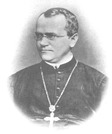
This course material is created as flipped classroom sessions for Artificial Intelligence Course
- Subject:
- Computer Science
- Material Type:
- Module
- Author:
- Swati Mali
- Date Added:
- 01/04/2017

This course material is created as flipped classroom sessions for Artificial Intelligence Course

Biology is designed for multi-semester biology courses for science majors. It is grounded on an evolutionary basis and includes exciting features that highlight careers in the biological sciences and everyday applications of the concepts at hand. To meet the needs of today’s instructors and students, some content has been strategically condensed while maintaining the overall scope and coverage of traditional texts for this course. Instructors can customize the book, adapting it to the approach that works best in their classroom. Biology also includes an innovative art program that incorporates critical thinking and clicker questions to help students understand—and apply—key concepts.



By the end of this section, you will be able to:Describe the scientific reasons for the success of Mendel’s experimental workDescribe the expected outcomes of monohybrid crosses involving dominant and recessive allelesApply the sum and product rules to calculate probabilities

In this 7th grade humanities lesson, students prepare Ghanaian Black-Eyed Peas and examine the exchange of foods between Eurasia, Africa, and the Americas during the Columbian Exchange.

Question sets on Paper 1 and Paper 3 & PPT 1

For paper 1: Abstract— Wireless sensor networks (WSN) consist of tiny sensor nodes scattered on a relatively large geographical area. Wireless Sensor Networks (WSNs) are low cost, low-power, multifunctional sensor nodes that are small in size and communicate untethered in short distances. The WSN nodes are used in numerous applications in different areas including military, health, industry and ecology. However, there are several restrictions such as low capability of computation, limited energy resources, unreliable channels, and the power consumption. This paper proposes different constraints and the solution for the same.For paper 2: Abstract—Main constraints of wireless sensor networks (WSN) are less memory space, limited power supply, processing speed and availability of bandwidth for communication. The most important challenge in wireless sensor networks is to design energy-efficient data gathering network which increases the life time of wireless sensor networks. In various studies, it is observed that processed data requires less power as compared to transmitting data in the wireless medium. Hence, it is more significant to apply compressed sensing algorithm at sensing node. Also, if Compressed Sensing (CS) is used with clustering method it will give significant power saving in wireless sensor networks (WSN). In this paper, we addressed comparison between energy saving obtained by changing randomcompressive sensing samples and without compressive sensing.For paper 3: Abstract— Wireless Sensor Networks constitute a wide range of applications related to national security, military, surveillance, health monitoring environment. The main constraint in wireless sensor network is its energy consumption and limited battery life of the sensor nodes. Coverage provides good quality of service but it is very important especially when combined with connectivity and energy efficiency. This paper provides some existing coverage protocols with their limitations. The proposed algorithm for the overlap area provides better coverageefficiency of 91.354% than the existing robust PEAS protocol that provides coverage efficiency of approximately 80% to 88% thus allowing minimum number of sensor nodes to be in the active state in order to conserve energy thereby increasing the lifetime of the sensor node.For paper 4: Abstract— Wireless sensor networks are mainly resource constrained with less memory space, limited power supply, processing speed and availability of bandwidth for communication. One of the most important challenges in wireless sensor networks is to design energy-efficient data gathering network which increases the lifetime of wireless sensor networks. Due to an enormous deployment of sensors, a tremendous data is generated by these sensor networks. Processing and transportation of such a huge data increase the energy consumption of sensornodes along with an increase in network traffic. It is observed that processed data requires less power as compared to transmitting data in the wireless medium. Hence, it is more significant to apply compressed sensing algorithm at sensing node. Compressive sensing (CS) technique generates a sparse signal of few nonzero samples from the original signal at sub-Nyquist sampling rate where reconstruction of the original signal is possible even with few sparse samples. Thus, all the necessary and more accurate information can be obtained from the data gathered by wireless sensor networks with less number of samples. In this paper, we compare three types of data gathering technique.